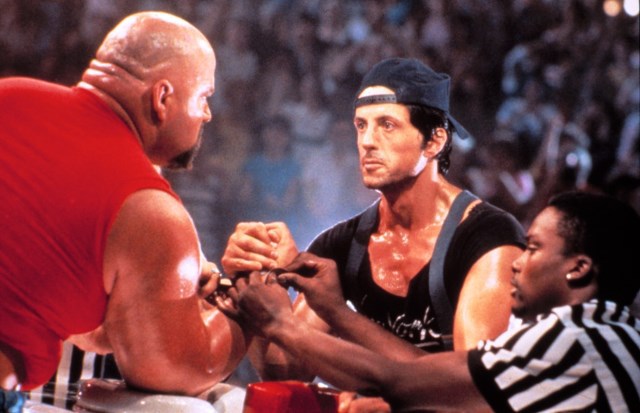The principles of the auction and push in contextual advertising
Contextual advertising today is the main source of customer acquisition for many companies. And for them, getting advertisements into the Yandex.Direct special placement is not just an important issue, but a matter of principle. Drop out of the special placement unit for at least one day can lead to a decrease in monthly revenue by 5% - which, you see, is no longer a joke.
Therefore, competition in some areas comes to an outright war. And when the possibilities for optimizing your own campaigns have already been exhausted, and you have not succeeded in defeating the competitor, ethical questionable methods are used.
One of these methods is push-ups. Let's try to figure out what it is, by what principle it works, and when the use of pre-compression can be justified.

It's no secret that Yandex.Direct works on the principle of an auction among advertisers. The more people who want to show ads for a specific request, the higher the bids. But in order to understand how the pressing works, you and I will have to better understand the principles of this auction.
Choosing a winner in an auction, Yandex.Direct does not compare just the bids of advertisers, but the product of the cost of a click on the click-through rate of ads (CTR). Direct also takes into account some other indicators, but to a lesser extent, so we will get by with these two.
It is important to remember that clickability is calculated by Direct for each key phrase for each block (special placement, guarantee, dynamic impressions) separately.
Yandex.Direct auction is a second price auction. The winner does not pay his bid, but the minimum price that ensures victory in the auction - the bid of the nearest competitor plus 30 kopecks (the minimum auction step in Yandex.Direct).

Now that we know how the auction works in Yandex.Direct, we can draw the following conclusion: by narrowing the gap between its bid and the border of entry into the block (getting closer to it), the advertiser does not increase the chances of getting into the block (because the bid is all the same less pass-through), but increases the actual cost of a click to competitors, since Direct seeks to earn no less for those who are in the block (special placement or guarantee) than for those who are not in it (second-price principle).
Let's look at the mechanics of this method using an example. For simplicity of understanding, we will take for the fact that all advertisers in this example have the same CTR (although in practice this does not happen).

In general, running out is bad, and we do not approve of it. Ultimately, the push-up only leads to the heating of the auction and raising bids for all advertisers. But sometimes this method is justified.

The first case is when one of the competitors for some reason lifted the bet several times. As we recall from the principles of the auction, he himself does not pay this bid, but only bothers everyone else. Such a negligent advertiser can be punished. Squeeze it according to the described method for a short time and with the help of 20 friends provide 20 clicks that will cost him a weekly, if not more, budget. After that, change your bet back. In this case, you can only regret an inexperienced advertiser: most likely, he will not even understand what happened. But Yandex.Direct technical support will explain to him where the entire advertising budget has gone, and he will no longer raise bids.

The second case is a brand war. Suppose you are a manufacturer of smartphones, and a competitor is advertised for queries containing the names of the models of your production. Your dealers lose traffic, sales fall - you incur losses. Since the war has begun against you in the context, you can and should use the entire available arsenal, including urging.
The first and obvious problem is that tightening the competition will not go unnoticed, the retaliatory strike will not take long. You can also be squeezed by other key phrases or even squeezed out of special accommodation.
Secondly, the use of push-ups in itself increases expenses, since you begin to operate with large bets.
And thirdly, you can easily “fly in” if you do not have time to change rates on time. Your bid can suddenly become passable for a variety of reasons, from disabling competitors' campaigns to changing bids or even CTR ads. Therefore, if the pull-up is not a one-time character (as in the case of the punishment of a negligent advertiser), but permanent (for example, a brand war), then you should definitely use contextual advertising automation tools - bid managers who automatically manage bids according to the rules you set .
In addition, since now most advertisers use the “Display in the block at the lowest price” strategy, you cannot squeeze one of the competitors - you immediately squeeze everyone who is in the special placement block.
Let's take eLama.ru as an example and consider the settings that you need to set in the bid manager if you decide to squeeze your competitors by turning a blind eye to ethical considerations.

For the preload to work, we need to constantly set the bid close to the price needed to enter the special placement, but a little less. Therefore, in the bid manager, we use the following algorithm for calculating bids: the cost of entering the special placement minus 0.03 ye.
In this example, we created two rules: for working and non-working hours, with different limits on the maximum bid, in order to additionally insure ourselves against overpayments per click.
We hope this article will help you better understand the principles of contextual advertising, and you will never have to put into practice the knowledge you have gained in practice. We are for a peaceful context.
PS For skeptics: if you think that when applying the “Display in the unit at the lowest price” strategy, the push-in cannot be used, then simply create two Yandex.Direct accounts and create exactly the same ads in them (the same keywords, the same texts), but with different links, and see how the threshold for entering special placement will change when you increase the bid in one of the accounts.
PPS This is the second version of the article about pushing in contextual advertising, especially for Megamind. Original article (first version) on the eLama blog.
Therefore, competition in some areas comes to an outright war. And when the possibilities for optimizing your own campaigns have already been exhausted, and you have not succeeded in defeating the competitor, ethical questionable methods are used.
One of these methods is push-ups. Let's try to figure out what it is, by what principle it works, and when the use of pre-compression can be justified.
Yandex.Direct auction principles

It's no secret that Yandex.Direct works on the principle of an auction among advertisers. The more people who want to show ads for a specific request, the higher the bids. But in order to understand how the pressing works, you and I will have to better understand the principles of this auction.
Bet calculation principle
Choosing a winner in an auction, Yandex.Direct does not compare just the bids of advertisers, but the product of the cost of a click on the click-through rate of ads (CTR). Direct also takes into account some other indicators, but to a lesser extent, so we will get by with these two.
For example, a user enters the query “pizza delivery in an hour”.
The clickability of your ad on this request is 10%, the rate is 50 rubles. So, with 100 impressions, Direct will earn 500 rubles.
The competitiveness of a competitor’s ad for the same request is 5%, and the bid is greater - 70 rubles. But with 100 impressions Direct will earn only 350 rubles, which means it’s better to show your ad.
It is important to remember that clickability is calculated by Direct for each key phrase for each block (special placement, guarantee, dynamic impressions) separately.
CPC pricing
Yandex.Direct auction is a second price auction. The winner does not pay his bid, but the minimum price that ensures victory in the auction - the bid of the nearest competitor plus 30 kopecks (the minimum auction step in Yandex.Direct).
For example, you are ready to pay up to 20 rubles per click, and a competitor is willing to pay up to 30 rubles. At the same time, the clickability of his ad is 5%. So, Direct can earn on it up to 150 rubles from 100 impressions.
The clickability of your ad is 10%. So, in order to earn the same 150 rubles for you, you need to take 15 rubles per click. Therefore, you win the auction, and the click will not cost 20 rubles (as you indicated), but only 15.3 rubles (competitor’s bid * 100 / your CTR + 30 kopecks).
How the preload works

Now that we know how the auction works in Yandex.Direct, we can draw the following conclusion: by narrowing the gap between its bid and the border of entry into the block (getting closer to it), the advertiser does not increase the chances of getting into the block (because the bid is all the same less pass-through), but increases the actual cost of a click to competitors, since Direct seeks to earn no less for those who are in the block (special placement or guarantee) than for those who are not in it (second-price principle).
Let's look at the mechanics of this method using an example. For simplicity of understanding, we will take for the fact that all advertisers in this example have the same CTR (although in practice this does not happen).
The cost of admission to special accommodation on request "pizza delivery" is 160 rubles.
At the same time, in fact, the advertisers who are in this block can pay less if their competitors decided that it is easier to place in the guaranteed impressions block, the entrance to which is only 95 rubles, and set rates from 96 to 100 rubles. In this case, in fact, the cost of a click in a special placement at the bottom position is not 160, but only 100.3 rubles.
But if one of the advertisers increases his bid to 150 rubles, then the actual cost of a click in a special placement will be 150.3 rubles, that is, it will become one and a half times more.
When to Use Preload

In general, running out is bad, and we do not approve of it. Ultimately, the push-up only leads to the heating of the auction and raising bids for all advertisers. But sometimes this method is justified.

The first case is when one of the competitors for some reason lifted the bet several times. As we recall from the principles of the auction, he himself does not pay this bid, but only bothers everyone else. Such a negligent advertiser can be punished. Squeeze it according to the described method for a short time and with the help of 20 friends provide 20 clicks that will cost him a weekly, if not more, budget. After that, change your bet back. In this case, you can only regret an inexperienced advertiser: most likely, he will not even understand what happened. But Yandex.Direct technical support will explain to him where the entire advertising budget has gone, and he will no longer raise bids.

The second case is a brand war. Suppose you are a manufacturer of smartphones, and a competitor is advertised for queries containing the names of the models of your production. Your dealers lose traffic, sales fall - you incur losses. Since the war has begun against you in the context, you can and should use the entire available arsenal, including urging.
Preload problems
The first and obvious problem is that tightening the competition will not go unnoticed, the retaliatory strike will not take long. You can also be squeezed by other key phrases or even squeezed out of special accommodation.
Secondly, the use of push-ups in itself increases expenses, since you begin to operate with large bets.
And thirdly, you can easily “fly in” if you do not have time to change rates on time. Your bid can suddenly become passable for a variety of reasons, from disabling competitors' campaigns to changing bids or even CTR ads. Therefore, if the pull-up is not a one-time character (as in the case of the punishment of a negligent advertiser), but permanent (for example, a brand war), then you should definitely use contextual advertising automation tools - bid managers who automatically manage bids according to the rules you set .
In addition, since now most advertisers use the “Display in the block at the lowest price” strategy, you cannot squeeze one of the competitors - you immediately squeeze everyone who is in the special placement block.
Push Up Automation
Let's take eLama.ru as an example and consider the settings that you need to set in the bid manager if you decide to squeeze your competitors by turning a blind eye to ethical considerations.

For the preload to work, we need to constantly set the bid close to the price needed to enter the special placement, but a little less. Therefore, in the bid manager, we use the following algorithm for calculating bids: the cost of entering the special placement minus 0.03 ye.
In this example, we created two rules: for working and non-working hours, with different limits on the maximum bid, in order to additionally insure ourselves against overpayments per click.
We hope this article will help you better understand the principles of contextual advertising, and you will never have to put into practice the knowledge you have gained in practice. We are for a peaceful context.
PS For skeptics: if you think that when applying the “Display in the unit at the lowest price” strategy, the push-in cannot be used, then simply create two Yandex.Direct accounts and create exactly the same ads in them (the same keywords, the same texts), but with different links, and see how the threshold for entering special placement will change when you increase the bid in one of the accounts.
PPS This is the second version of the article about pushing in contextual advertising, especially for Megamind. Original article (first version) on the eLama blog.
